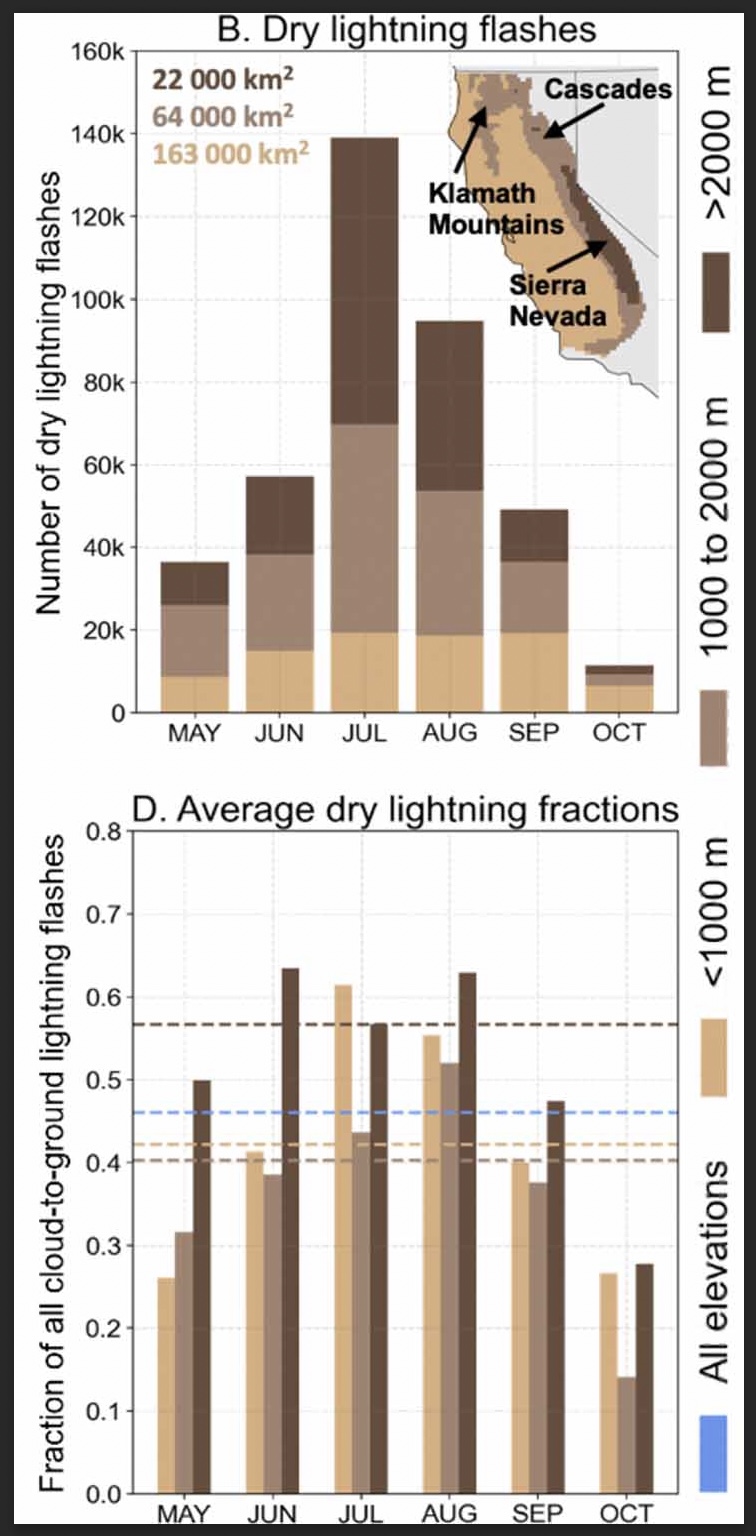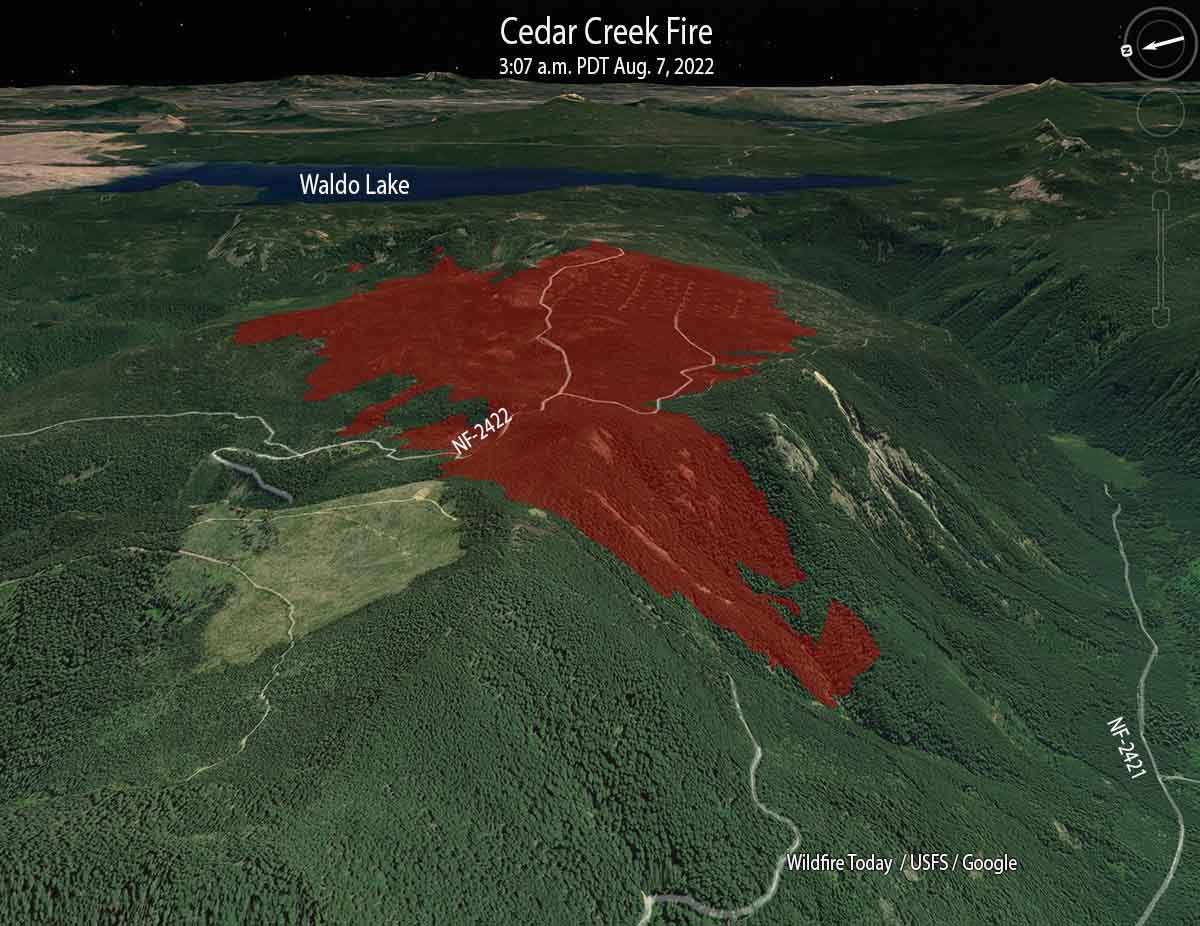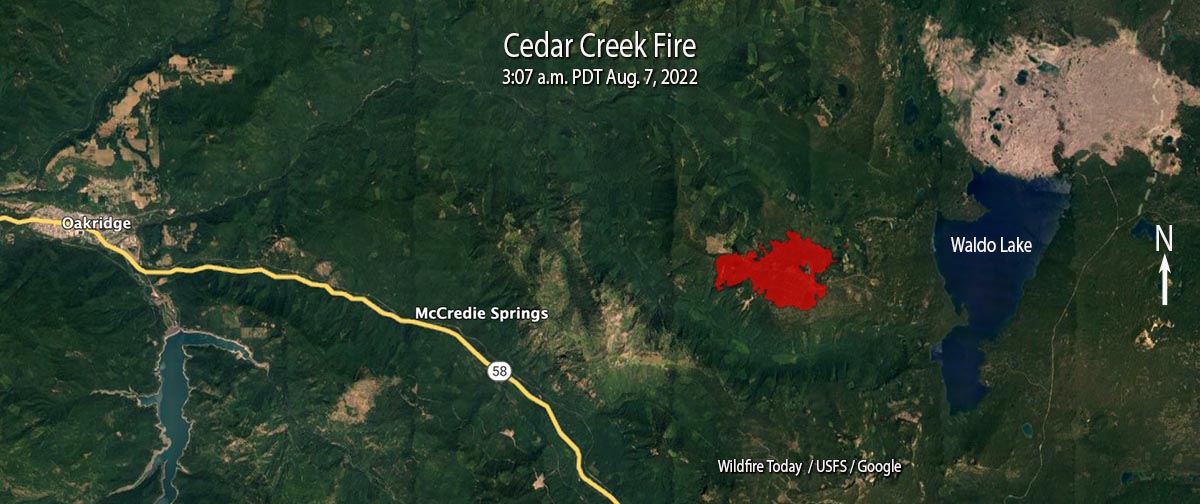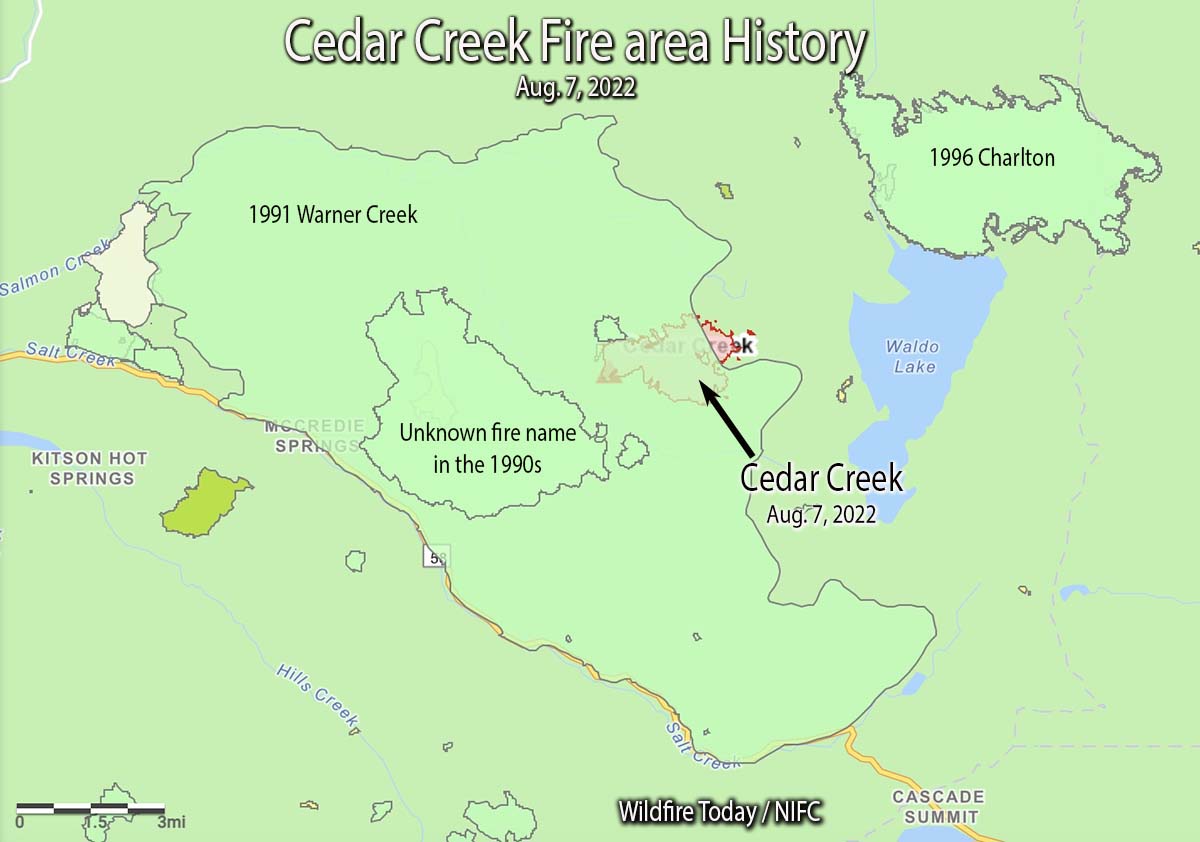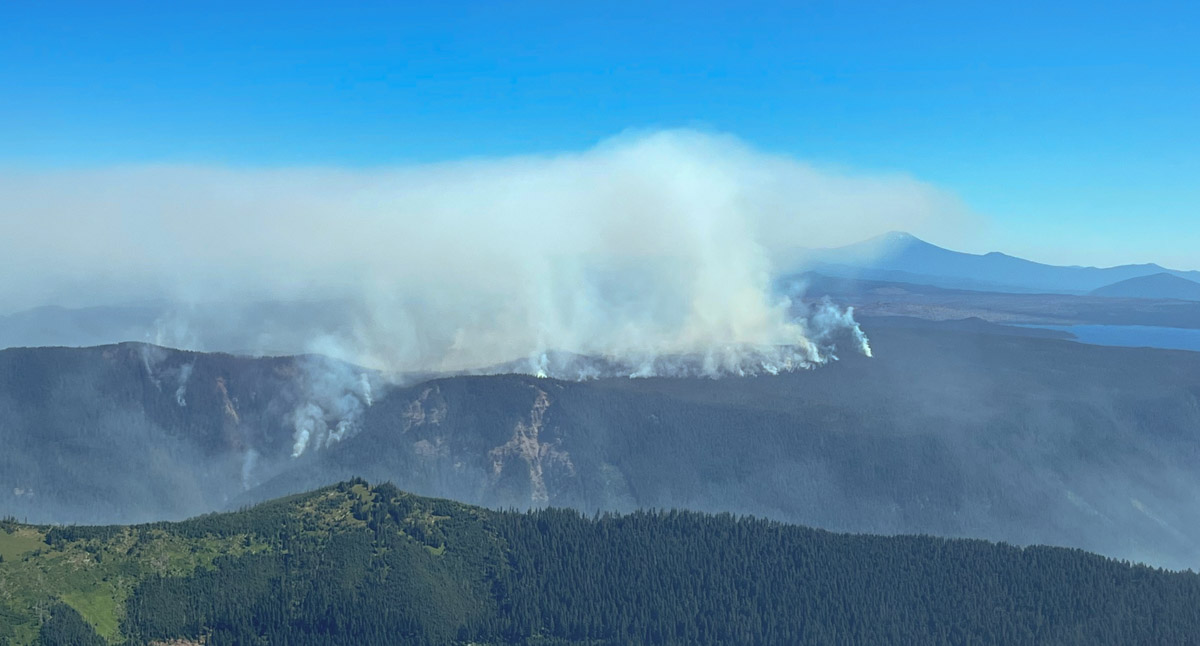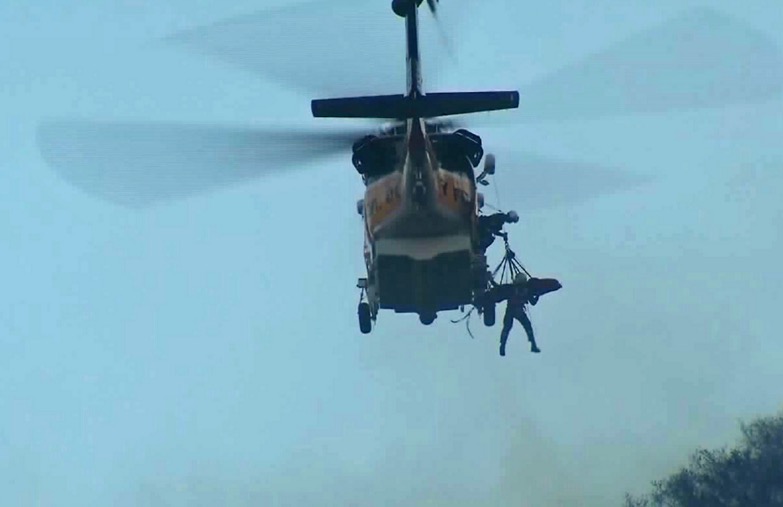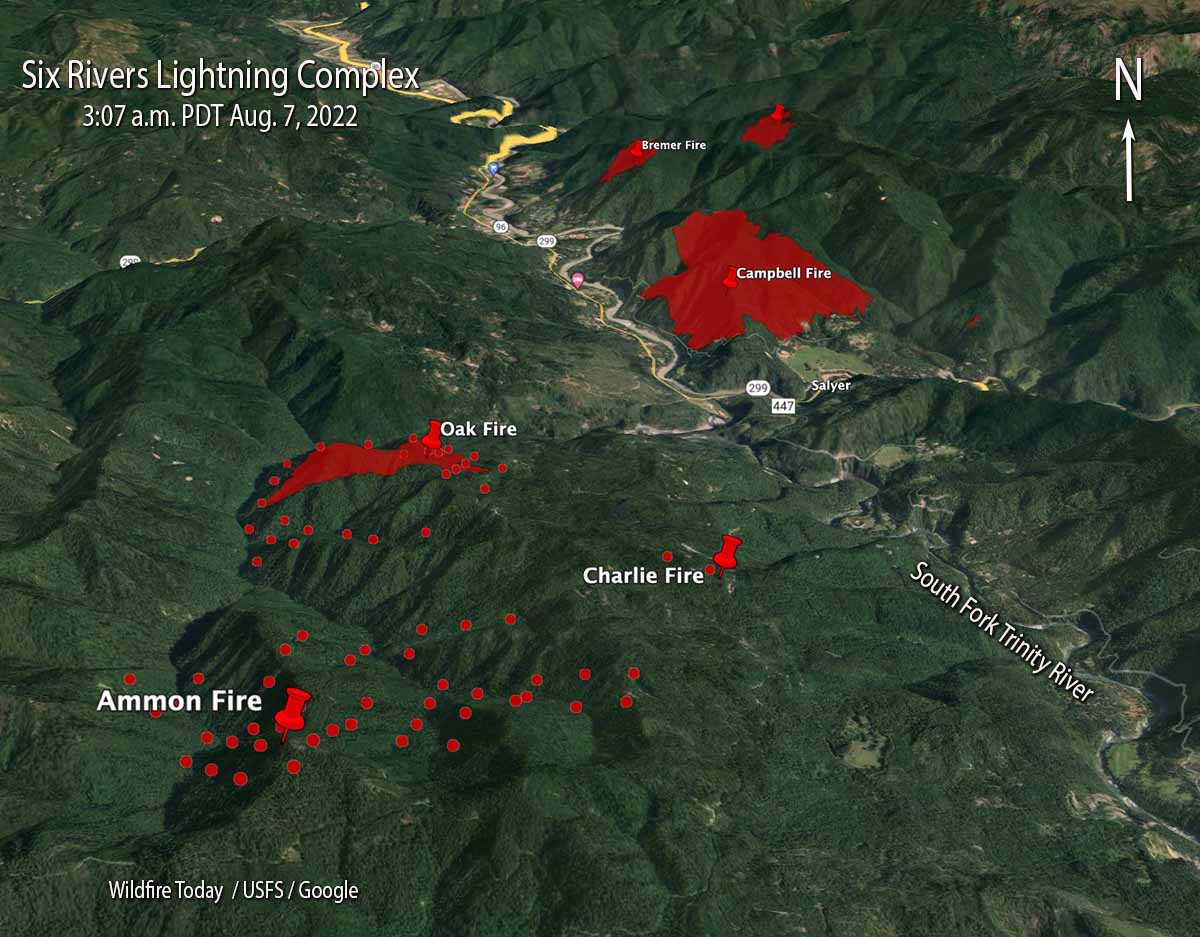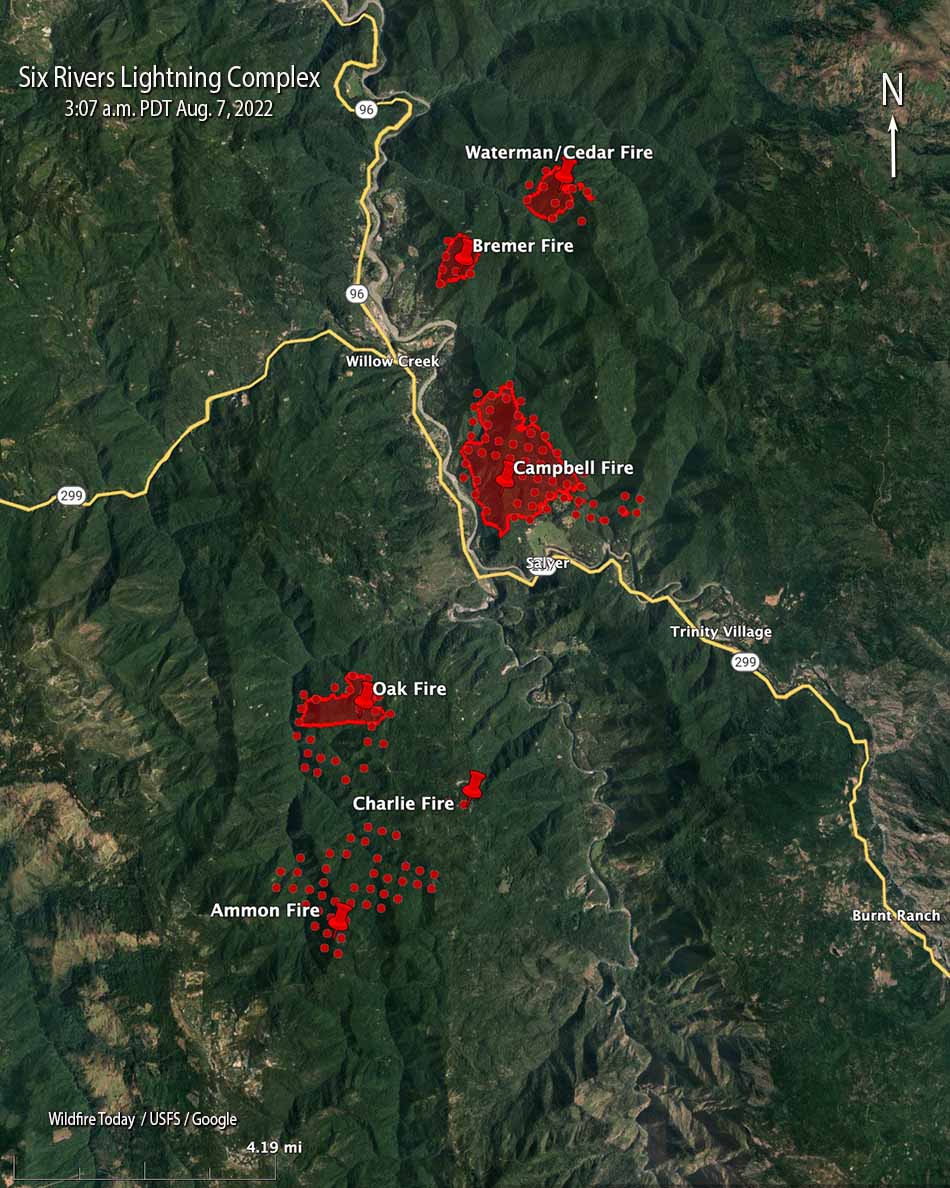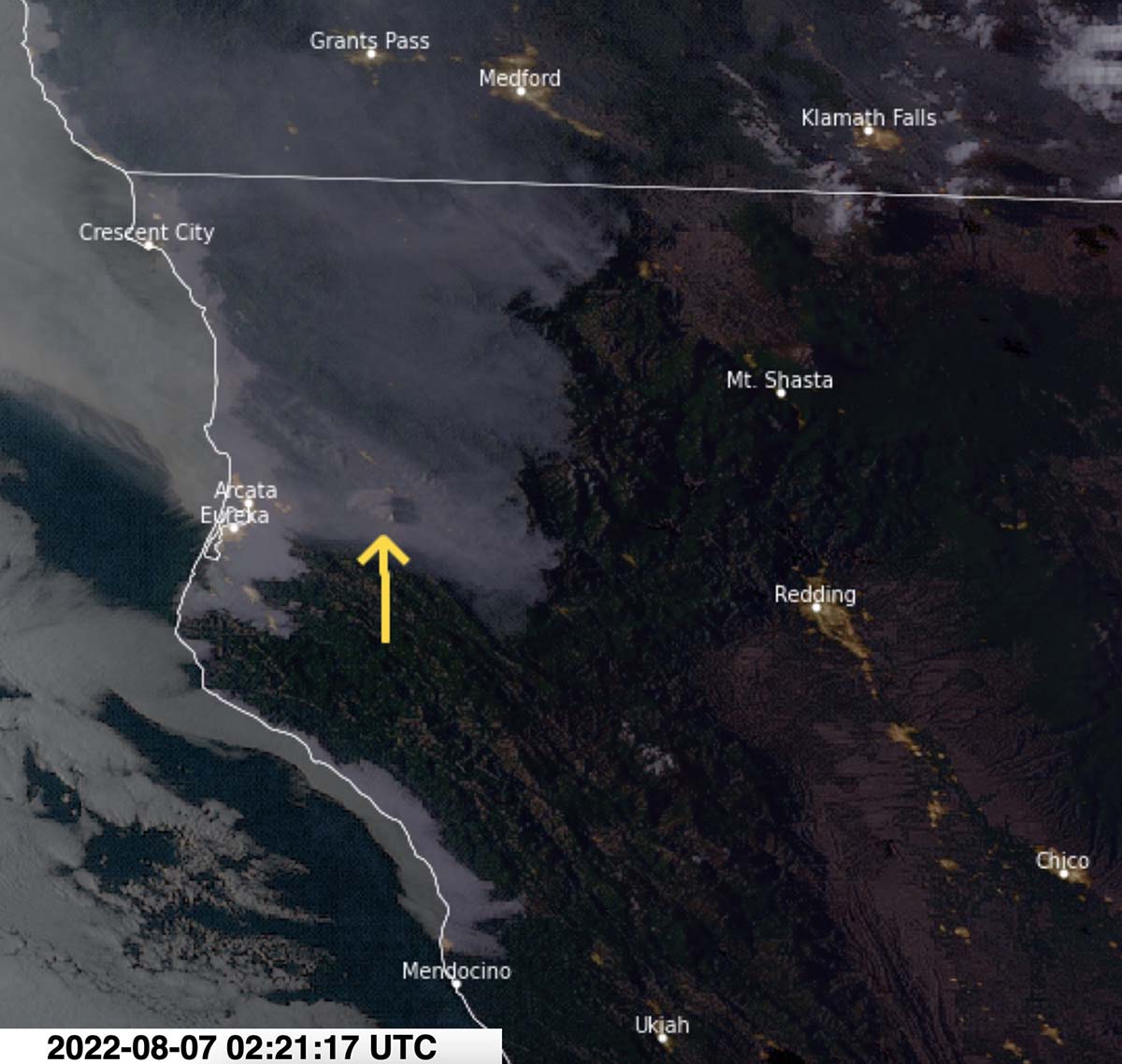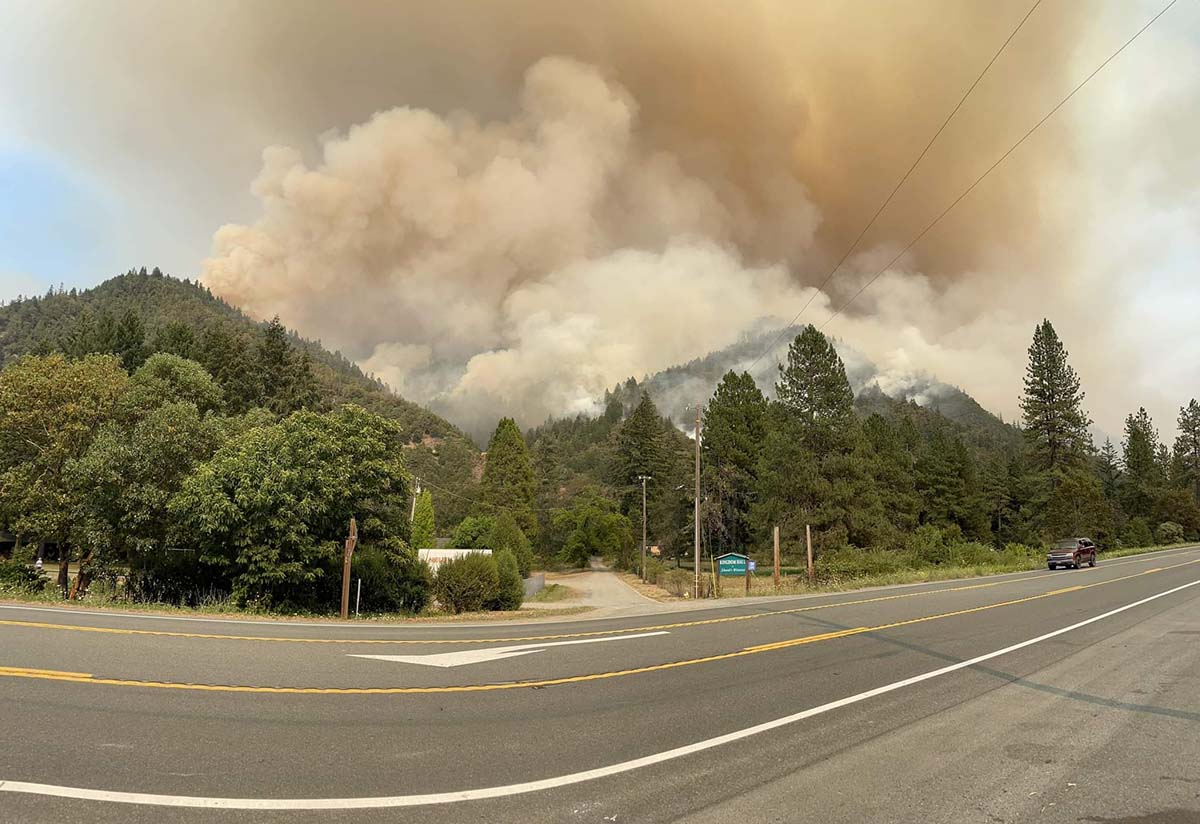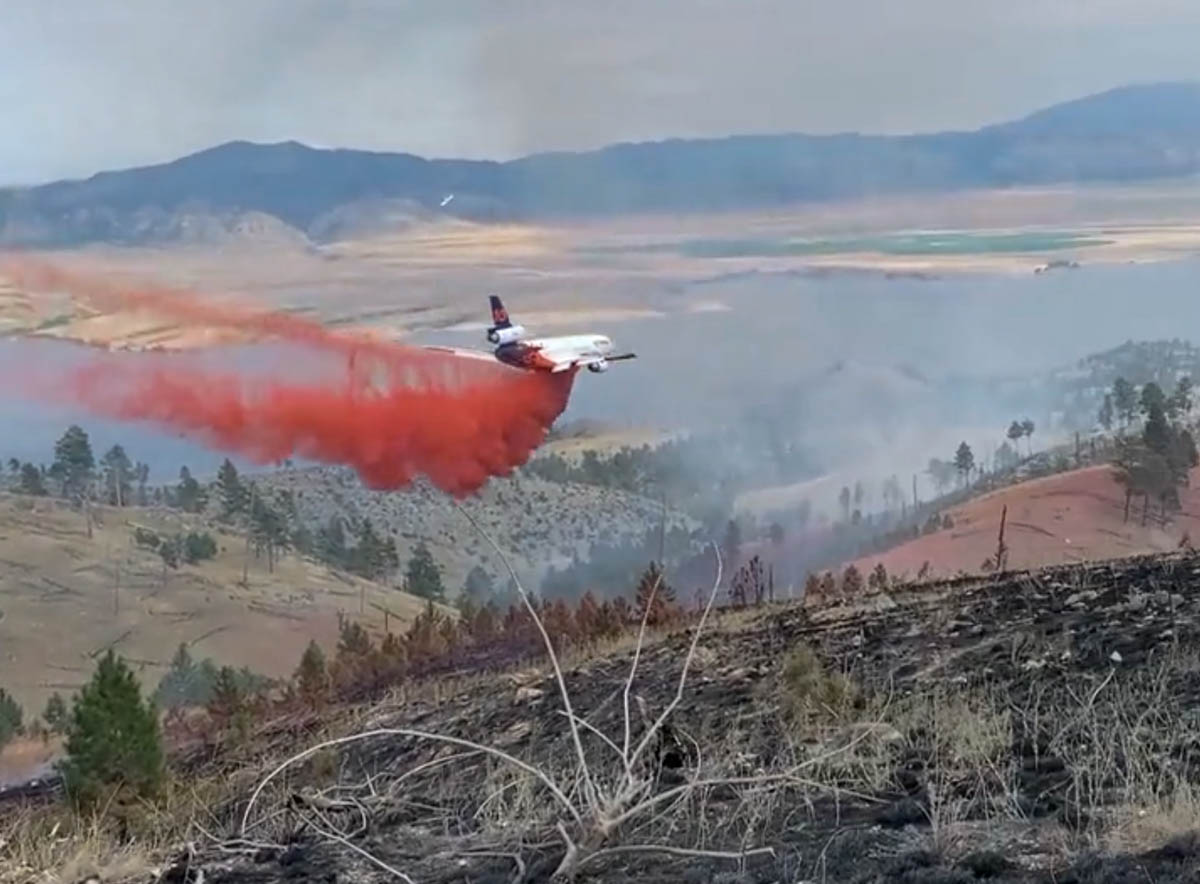Updated 8:36 a.m. PDT August 9, 2022
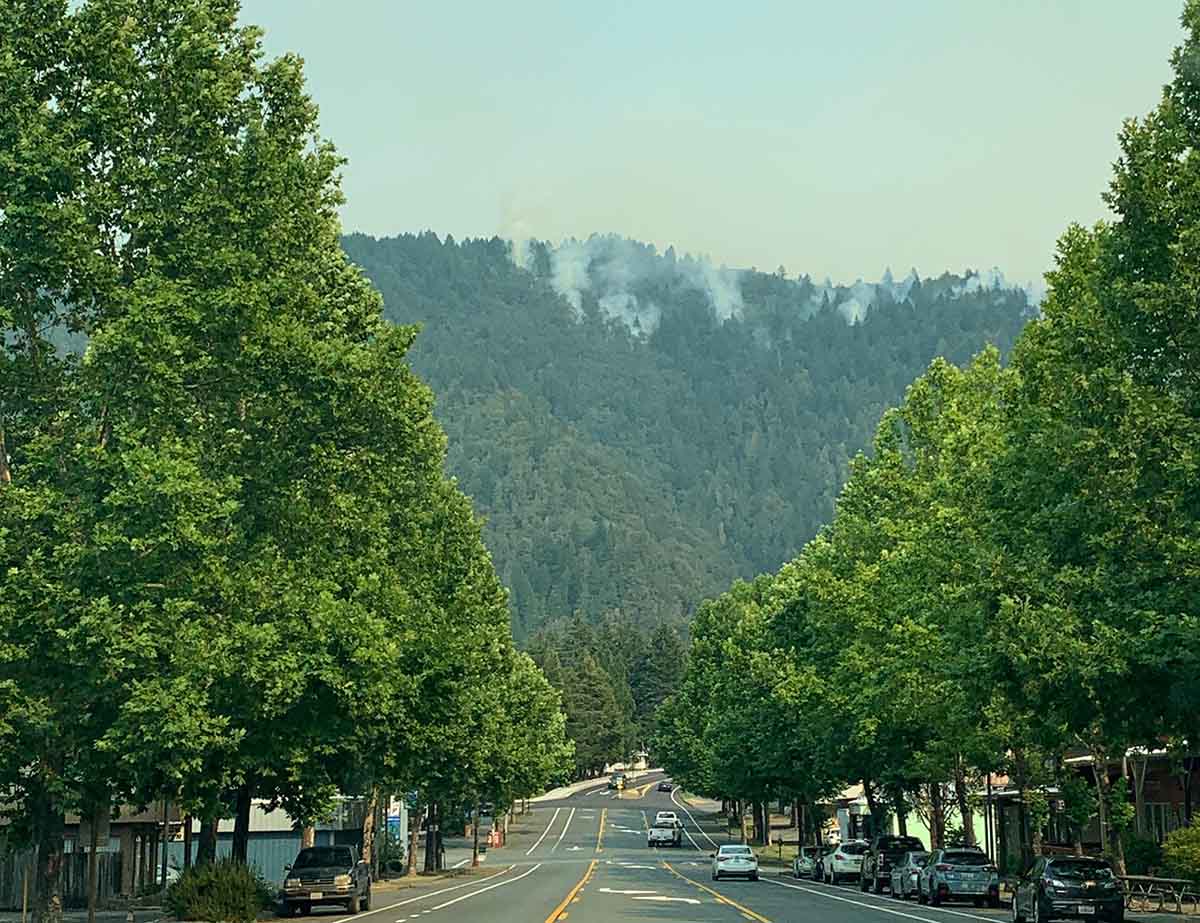
The wildfires in the Six Rivers Lightning Complex grew incrementally Monday, bringing the total acres burned up to about 8,900 acres when it was mapped at 9:00 Monday night. (See map below)
“Given the full-suppression tactics on this fire, crews will continue to fight fire aggressively in order to keep fire as small as possible,” the incident management team wrote in a Monday evening update. “Personnel are working to find areas to fight fire directly while continuing to provide community defense for Willow Creek, Seely Mcintosh, Salyer Heights, and other areas along the Trinity River.”
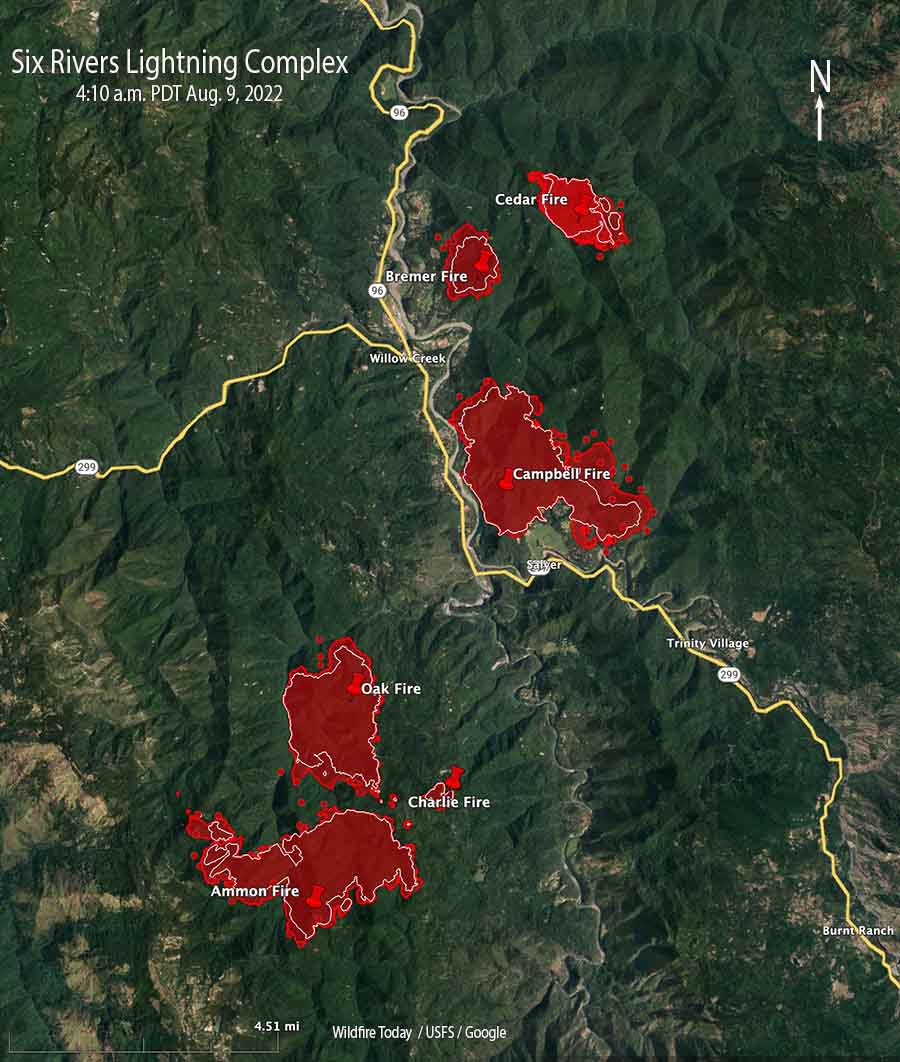
KCRA News reports that two firefighter crew carrier vehicles were destroyed by the fire. Dave Whitt, Chief of the Shingle Springs Band of Miwok Indians Tribal Fire, said “We had almost a million dollars worth of fire apparatus lost but nobody’s hurt, everybody’s safe.”
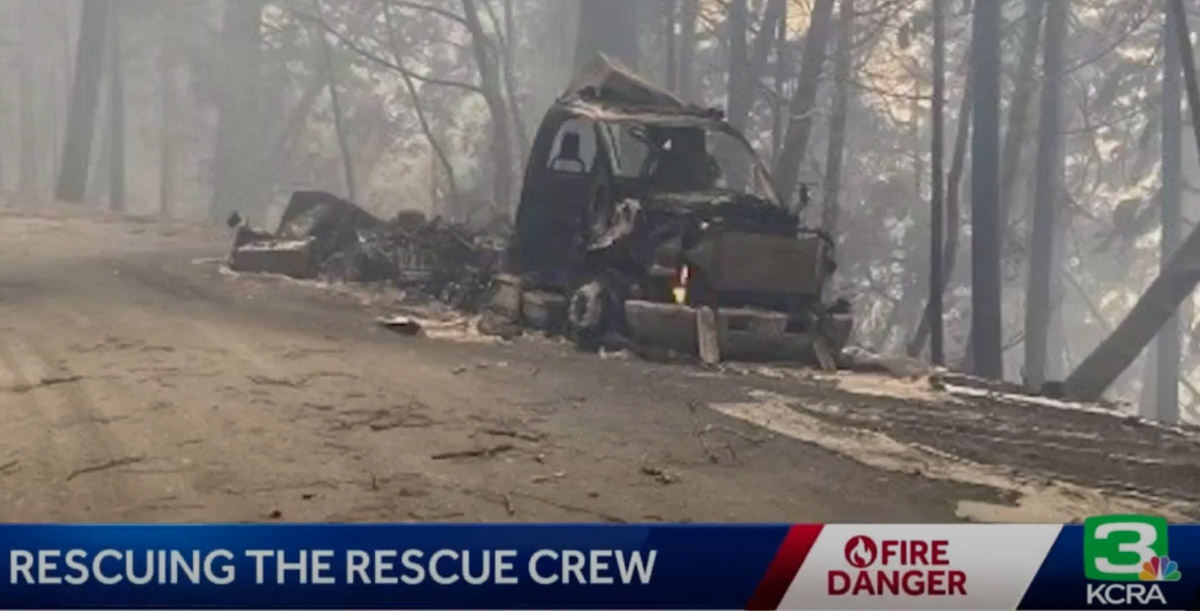
With the destruction of the vehicles, 15 of the firefighters lost all of the personal gear they brought to the fire except what they were carrying at the time. Gone were sleeping bags, tents, extra tools, clothing, and personal items. Without their gear they were unable to set up tents and camp overnight like the other firefighters, so the Red Cross helped out by treating them like evacuees, providing a place to sleep when they were off duty.
Chief Whitt told Wildfire Today that he expects the US Forest Service compensation/claims process to replace the fire trucks and firefighting equipment. The tribe may assist the firefighters to replace their personal belongings, he said, but was not sure.
Resources assigned to the fire include 14 Type 1 Crews, 8 Type 2 Crews, 11 ST (strike teams) Type 3 Crews, 12 Dozers, 4 Chippers, 11 ST Type 6 Engines, 4 ST Dozers, 11 Type 3 Engines, 7 Water Tender Support, and 2 Feller Bunchers for a total of 525 personnel.
The weather forecast continues to predict moderate and normal conditions.
Evacuations are in effect. For current information go to Humboldt County Office of Emergency Services (https://humboldtgov.org/2383/Current-Emergencies) or Trinity County Office of Emergency Services (https://www.trinitycounty.org/OES). Evacuation zones can be found at https://community.zonehaven.com/.
6:02 p.m. PDT August 8, 2022

The incident management team that assumed command of the Six Rivers Lightning Complex at 6 a.m. Sunday August 7 said on Monday, “This is a full suppression fire. Firefighters will aggressively fight fire whenever it is safe to do so.”
Among their objectives, they intend to keep the fire west of Lone Pine, south of Horse Linto Creek, east of Brannan Ridge, and north of Ammon Ridge.
Humboldt County has issued additional evacuation orders. The current information is at the county’s website.
The fire is in a remote area of northwest California in the Six Rivers National Forest between Redding and Eureka.
The team reported that last year’s snow event left a lot of trees dead and down on the ground. If ignited, it can result in fire behavior that is more substantial than what would usually be anticipated this time of year.
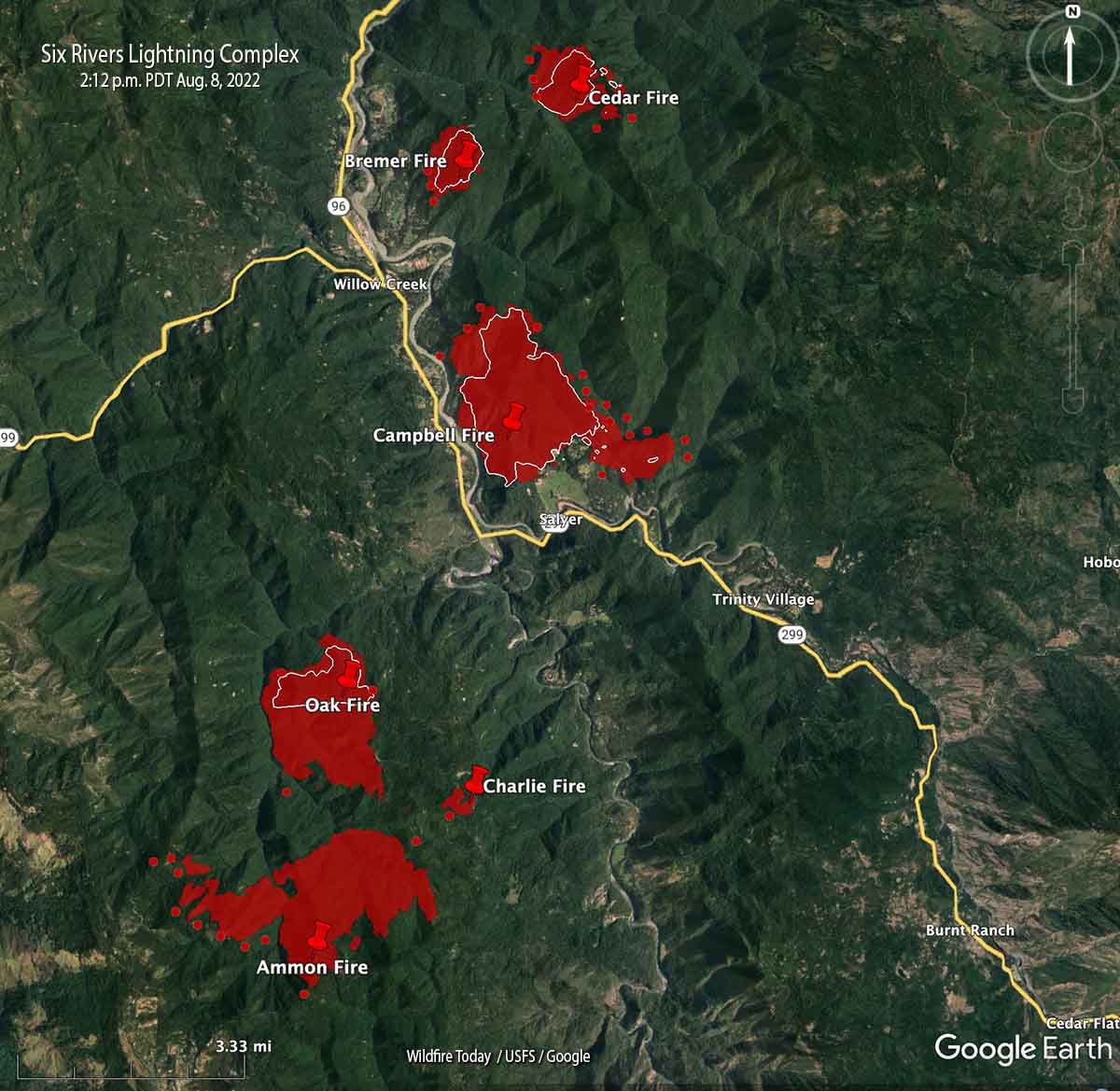
Continue reading “Six Rivers Lightning Complex grows to 8,920 acres”

